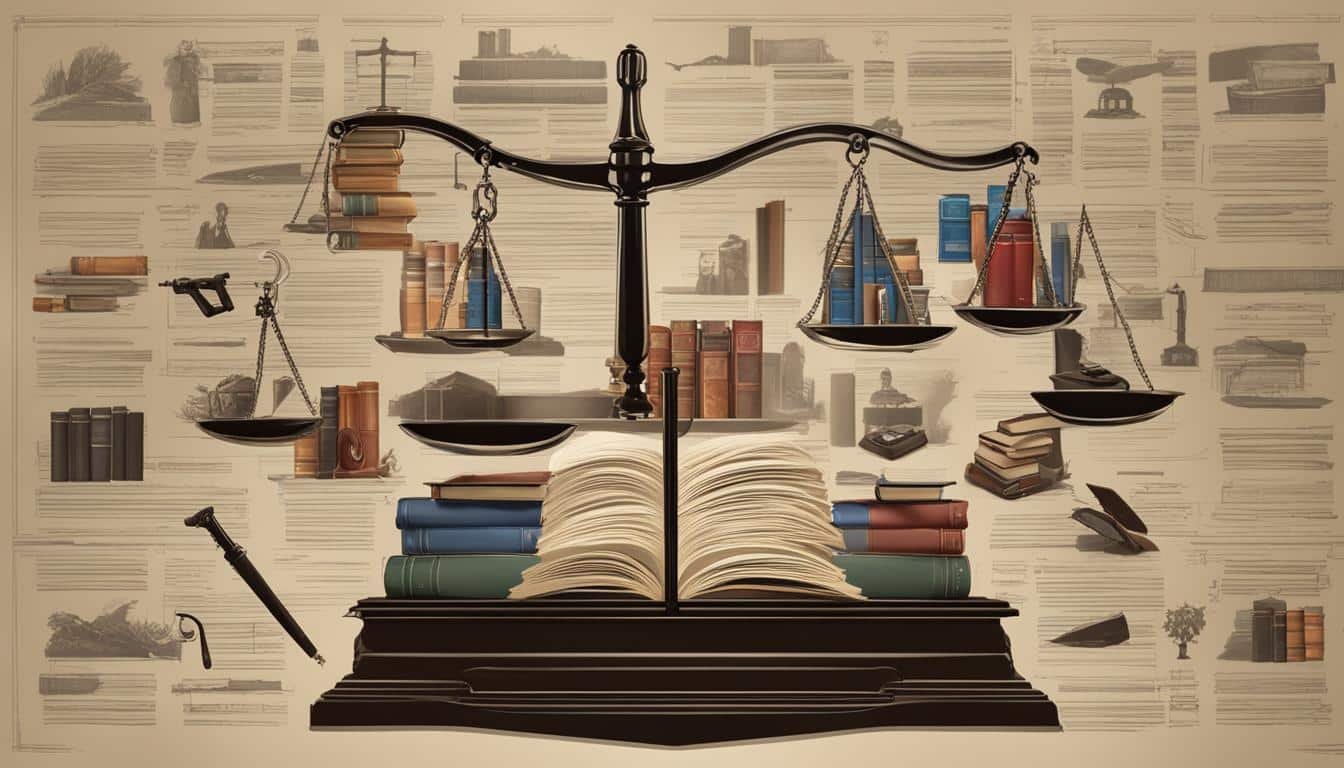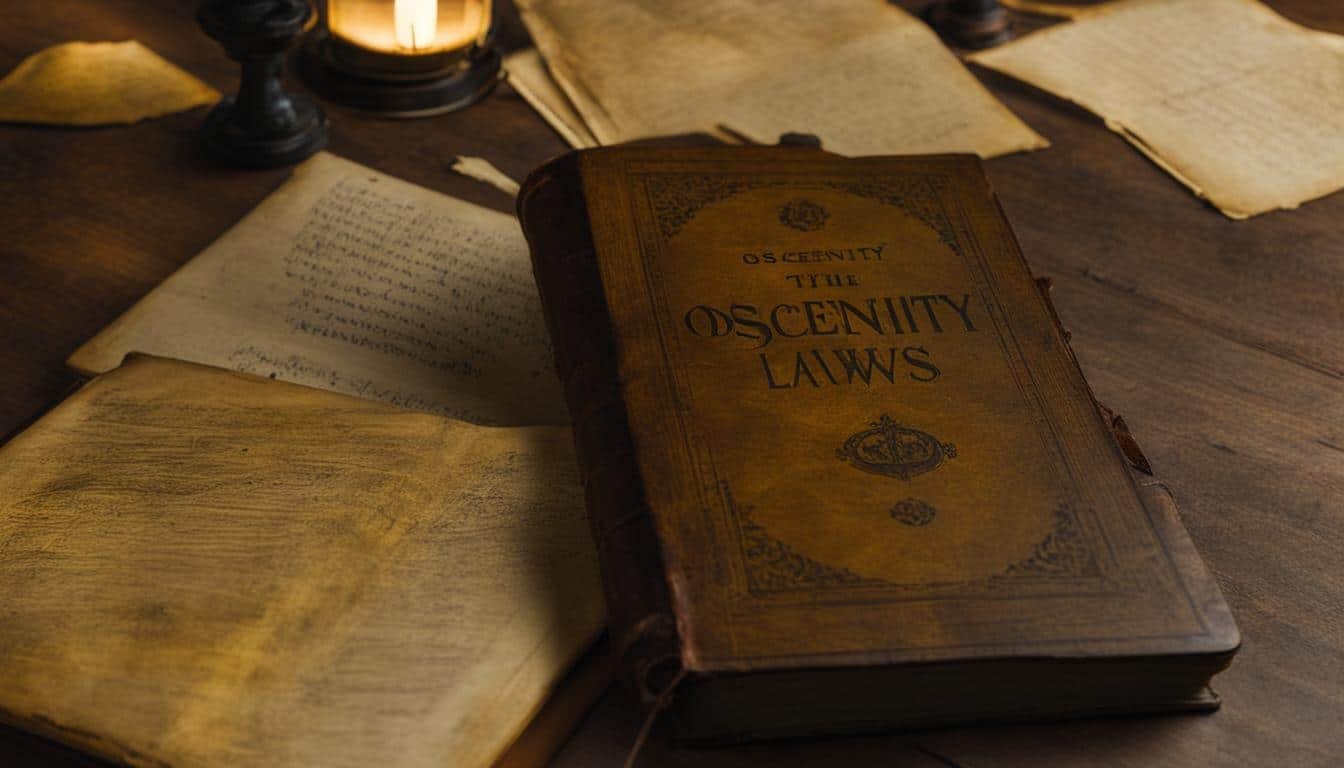Welcome to our article on the legal implications of obscenity crimes in media in the United States. In this section, we will explore how these crimes are governed by constitutional principles and the consequences they carry. Understanding the legal framework surrounding obscenity in media is important for both content creators and consumers, as it helps navigate the boundaries of freedom of expression and protect individuals from harmful material.
Key Takeaways:
- Obscenity crimes in media are regulated by constitutional principles in the United States.
- Federal statutes must be within the powers enumerated in the Constitution.
- Obscenity and child pornography are not protected under the First Amendment.
- The Supreme Court established the Miller test to determine whether a work is obscene.
- Zoning and licensing regulations may apply to pornography dealers.
Constitutional Protection and Limitations on Obscenity
The First Amendment of the Constitution protects freedom of speech and the press, upholding the fundamental principle of free expression in the United States. However, this protection has its limitations when it comes to obscenity and child pornography in media. While most forms of pornography are shielded by the First Amendment, obscenity and child pornography are considered exceptions and can be subject to legal restrictions based on their explicit content.
To determine whether a work is obscene and therefore not protected by the First Amendment, the Supreme Court established the Miller test. This test assesses the work’s appeal to the prurient interest, whether it depicts or describes patently offensive sexual conduct, and if it lacks any serious literary, artistic, political, or scientific value. By applying this test, the court aims to strike a balance between protecting free speech and prohibiting sexually explicit material that is considered obscene by the average person’s contemporary community standards.
It’s important to note that while individuals have a constitutional right to possess obscene material in private, there is no constitutional protection for providing or acquiring such material. This means that the distribution, sale, or production of obscenity or child pornography can be subject to regulation and criminal prosecution under federal and state laws. These legal measures aim to combat the harmful effects of explicit content on individuals and society, particularly when it involves minors.
“The First Amendment guarantees freedom of speech, but this freedom has its limits when it comes to obscenity and child pornography. The Supreme Court has set clear guidelines with the Miller test to determine what can be considered obscene, ensuring a delicate balance between freedom of expression and protecting the well-being of society.”
Constitutional Protection and Limitations on Obscenity
To better understand the constitutional protection and limitations on obscenity, it’s crucial to grasp the scope and boundaries of the First Amendment in relation to sexually explicit material. While the First Amendment safeguards the right to free speech and press, it does not extend this protection to obscenity or child pornography. By establishing guidelines like the Miller test, the Supreme Court provides a framework for distinguishing between protected forms of expression and content that can be legally restricted.
By implementing these regulations, the United States aims to maintain a delicate balance between protecting free speech and preventing the distribution and consumption of explicit content that can be considered obscene or harmful. These legal measures, combined with the enforcement actions by regulatory bodies like the Federal Communications Commission, endeavor to uphold the constitutional principles while safeguarding the well-being of society, particularly minors.
Table: Comparing Protected Forms of Expression and Obscenity
| Protected Forms of Expression | Obscenity |
|---|---|
| Political speeches | Graphic depictions of extreme sexual acts |
| Literary works | Explicit sexual content lacking serious value |
| Artistic creations | Material appealing to the prurient interest |
| Journalistic reporting | Works that describe or depict offensive sexual conduct |
| Scientific research | Material lacking any serious literary, artistic, political, or scientific value |
Government Regulations and Enforcement of Obscenity Laws
When it comes to regulating obscene programming in the United States, federal law takes a firm stance. Broadcasting obscene content is strictly prohibited at any time, while indecent or profane programming is restricted during certain hours. These laws aim to protect viewers from explicit content and maintain community standards.
The Federal Communications Commission (FCC) plays a crucial role in enforcing these laws. The FCC has the authority to issue fines, imprison offenders, revoke licenses, or deny license renewals. They define indecent speech as material that depicts or describes explicit sexual or excretory activities in a patently offensive manner, according to contemporary community standards.
It is important to note that the FCC respects First Amendment rights and treads cautiously when determining whether material is indecent. Their focus is on protecting the well-being of viewers, especially minors. Recent enforcement actions by the FCC serve as a reminder to broadcasters and content creators to ensure compliance with these laws.
Source Links
- https://www.aclu.org/documents/freedom-expression-arts-and-entertainment
- https://www.everycrsreport.com/reports/95-804.html
- https://www.fcc.gov/enforcement/areas/broadcast-obscenity-indecency-profanity







